3 Principles of Concealing a Gun from PHLster Holsters
Adam Scepaniak 04.13.21
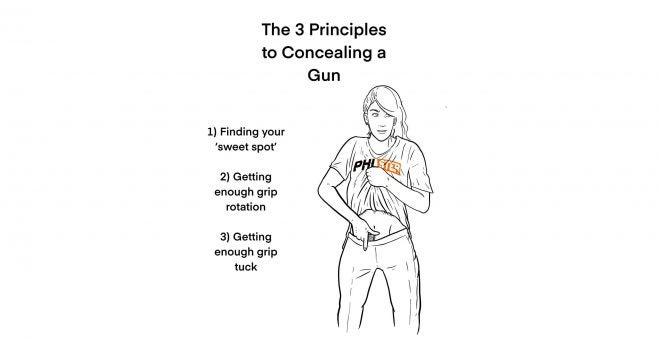
When it comes to concealing a firearm a lot of people do not understand or know what they should be looking for in a holster, the authentically correct or best orientation to situate their holster, and what is an acceptable level of concealment. I understand both sides of the coin when it comes to selecting holsters because I am a consumer and own dozens of holsters, but also sell them daily through my family’s gun store. It is difficult to easily explain the necessary nuances for good concealed carry to everybody because we’re all varying shapes and sizes. PHLster Holsters, based out of my home state of Minnesota, shared a phenomenal infographic to their customers explaining all of the details you should account for when purchasing and setting up your holster so we wanted to share that with you today.
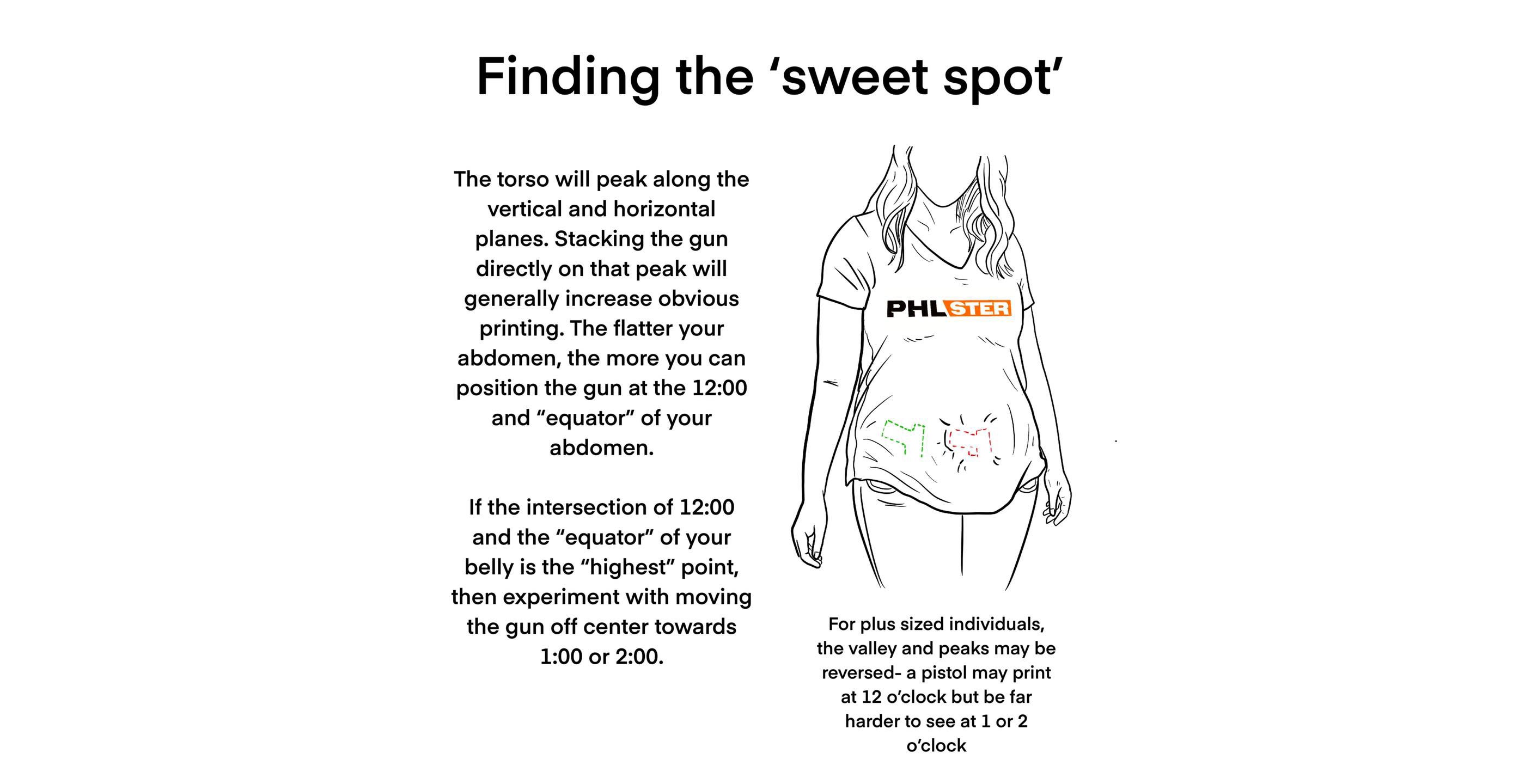
A lot of concealed carry advocates experience difficulty knowing exactly where they should be positioning their firearm about their waist so it prints the least and is simultaneously the most comfortable to carry. PHLster Holsters refers to this simply as the sweet spot.
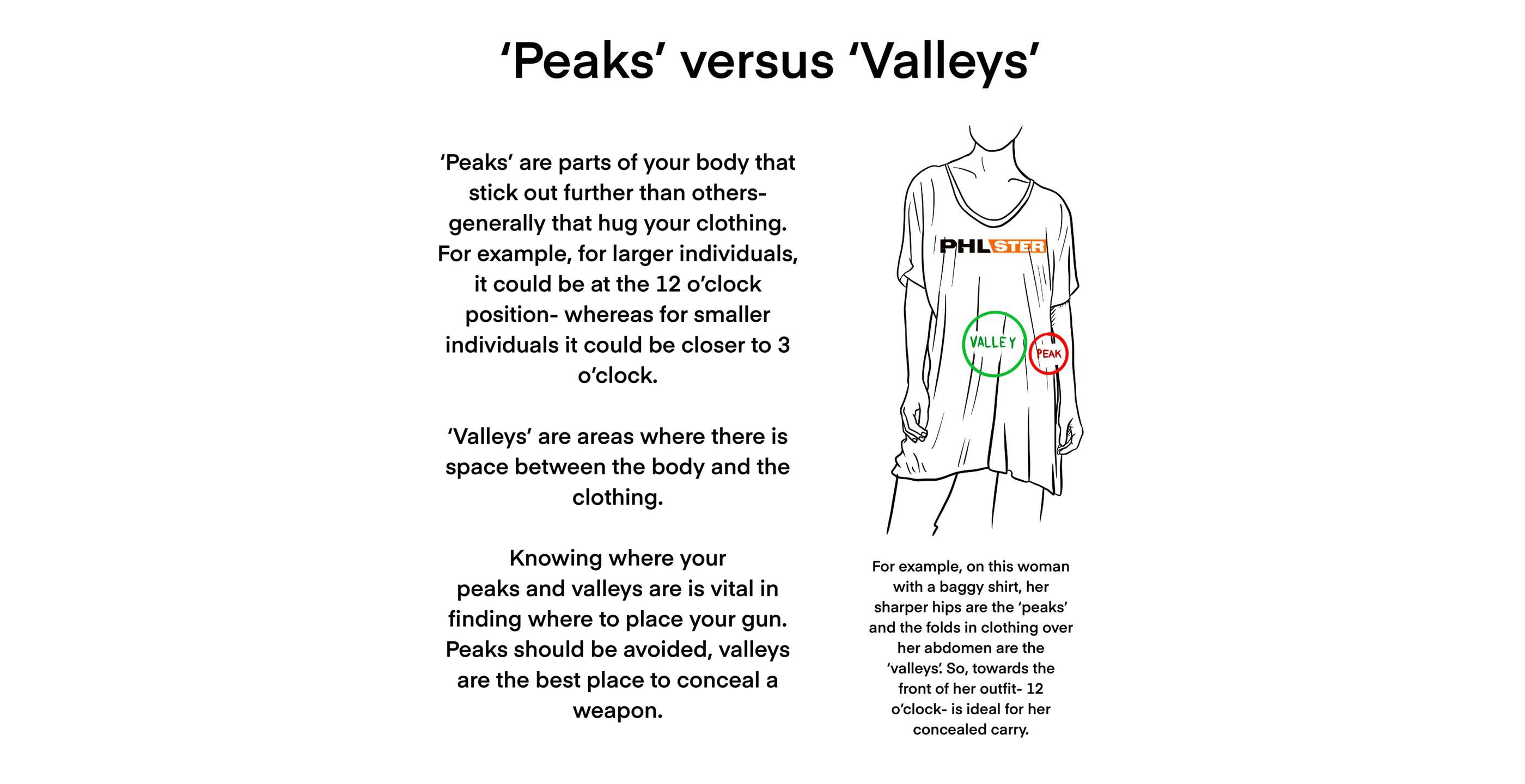
Understanding the “landscape” of your body (essentially the shape and contour) will give you a better perspective of where your firearm is likely to print, or be visible, underneath a garment or clothing. As described above, peaks or protruding areas of your body (hip bone or maybe stomach) should be avoided while valleys are perfect pockets to discreetly hide your firearm.
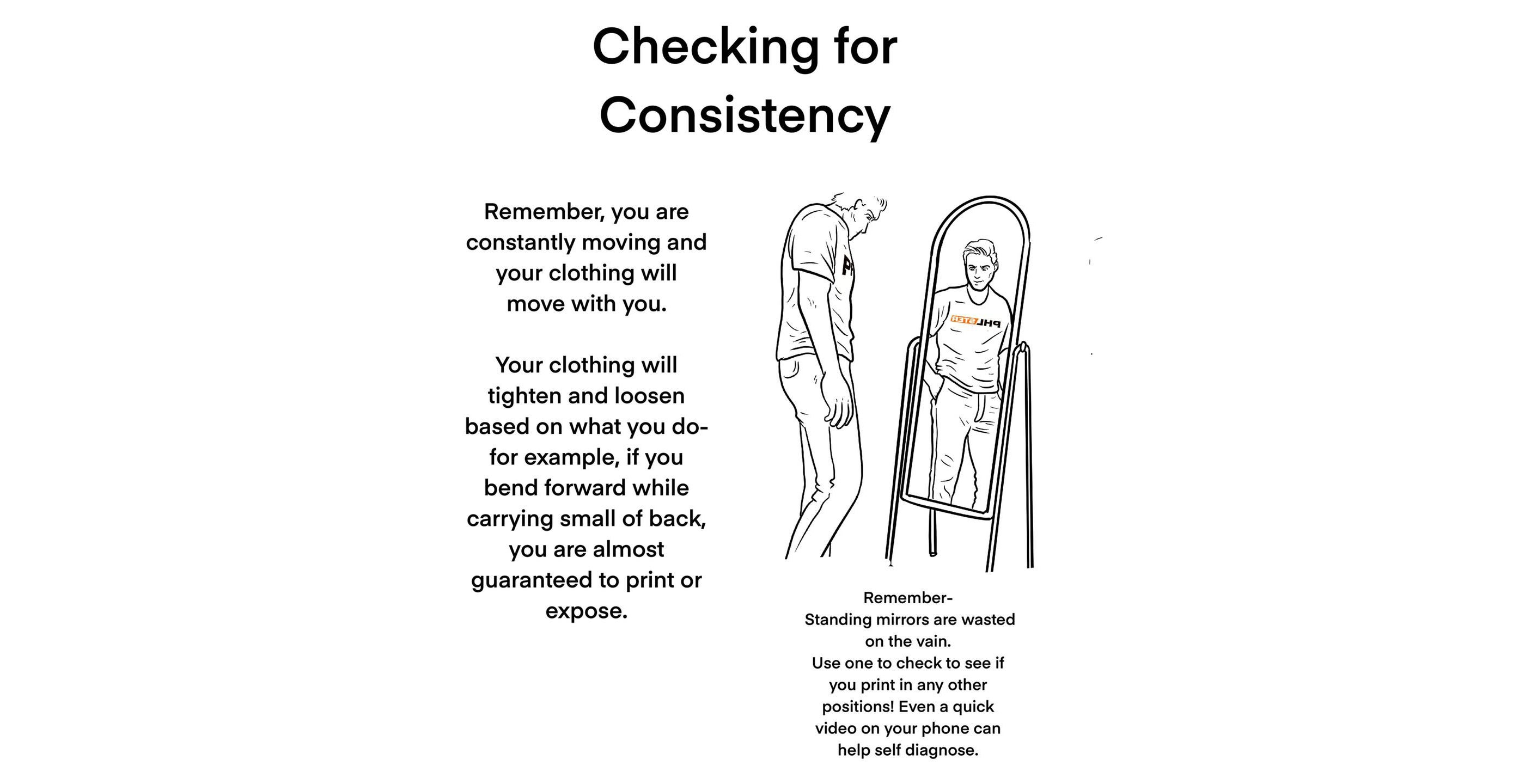
Some people might feel silly trying on your holster and posing for yourself at home, but it is actually good to “check your work.” Is the holster you bought adequately retaining your firearm? Is the position you chose genuinely concealing it without printing? Are the clothes you routinely wear going to sufficiently cover your holster? These are all questions to ask yourself with a simply mirror check in the comfort of your home.
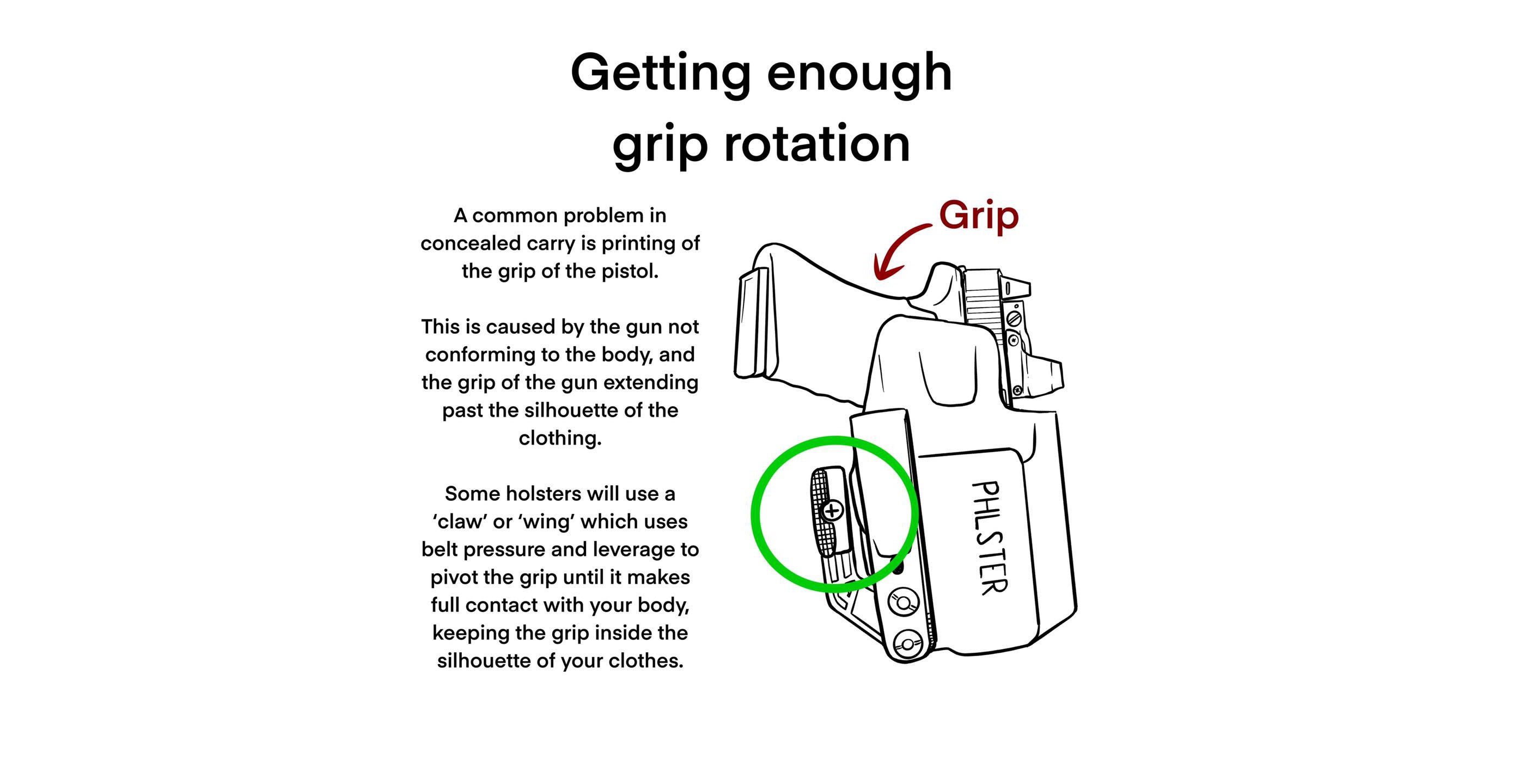
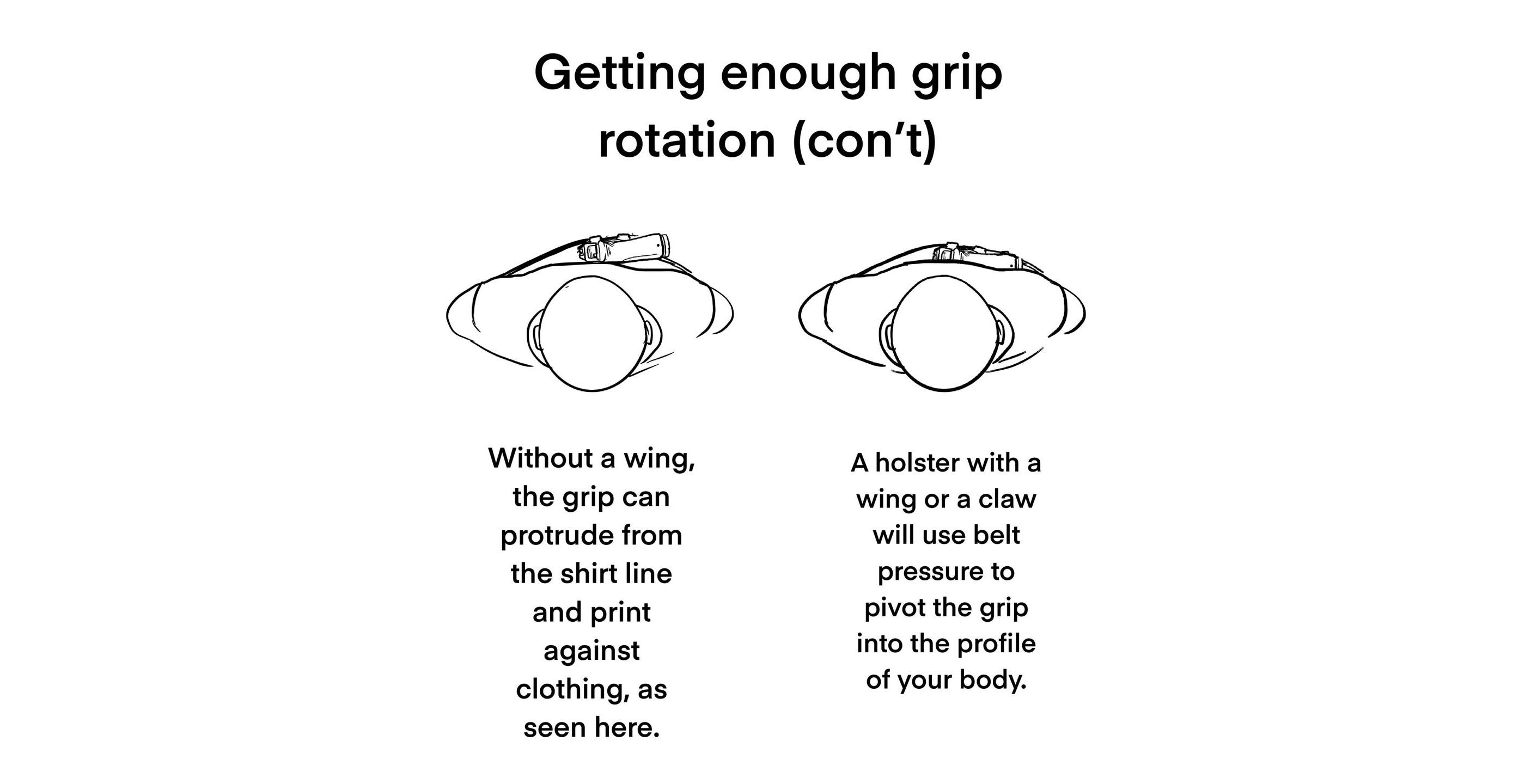
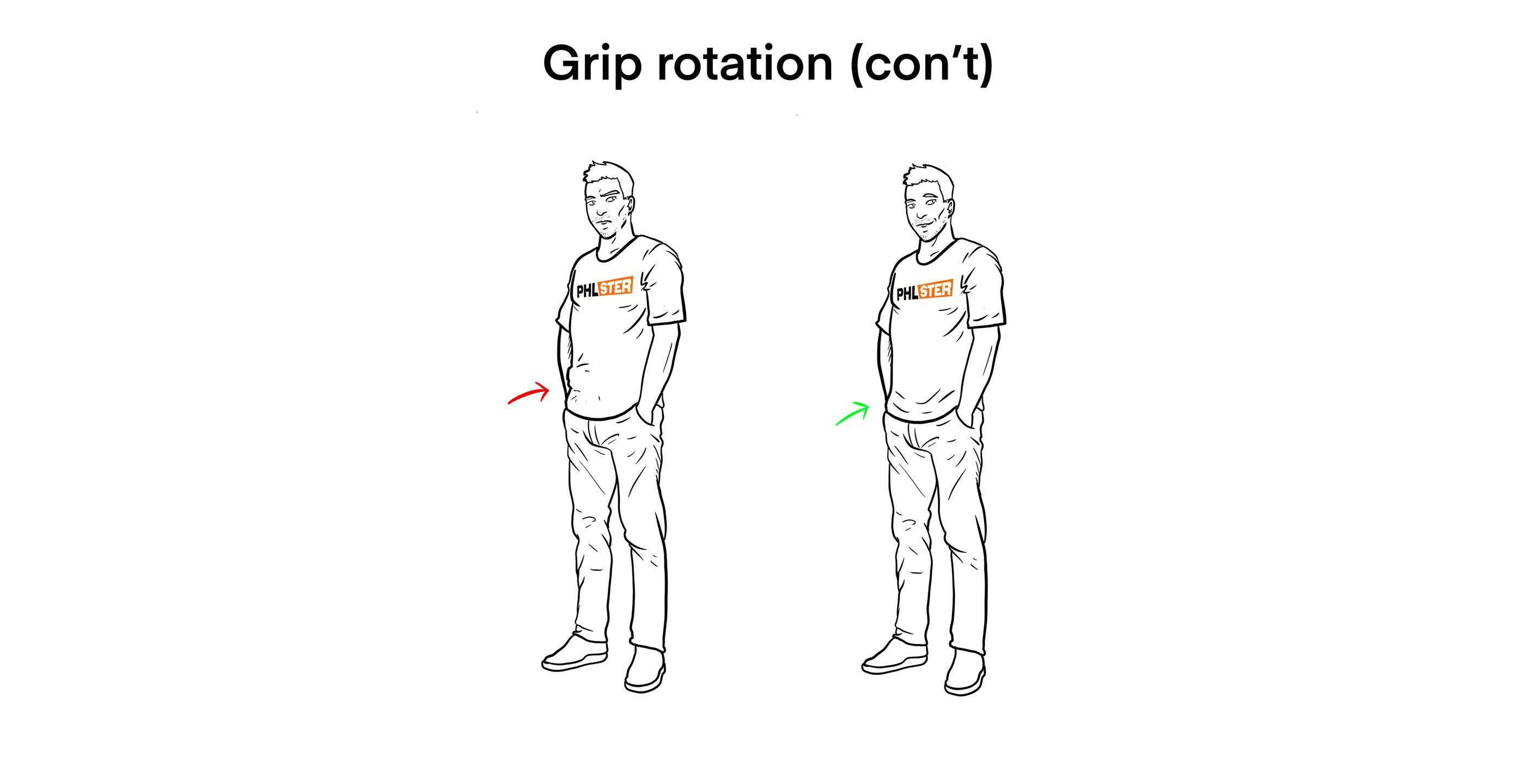
One element of a holster that not all holster manufacturers account for (but PHLster most certainly does) is getting enough grip rotation. This can often be accomplished with a “claw” or “wing” as some companies refer to them as, but it essentially means the grip is being rotated enough where it does not produce a strong protrusion under clothing; therefore, making your firearm noticeable.
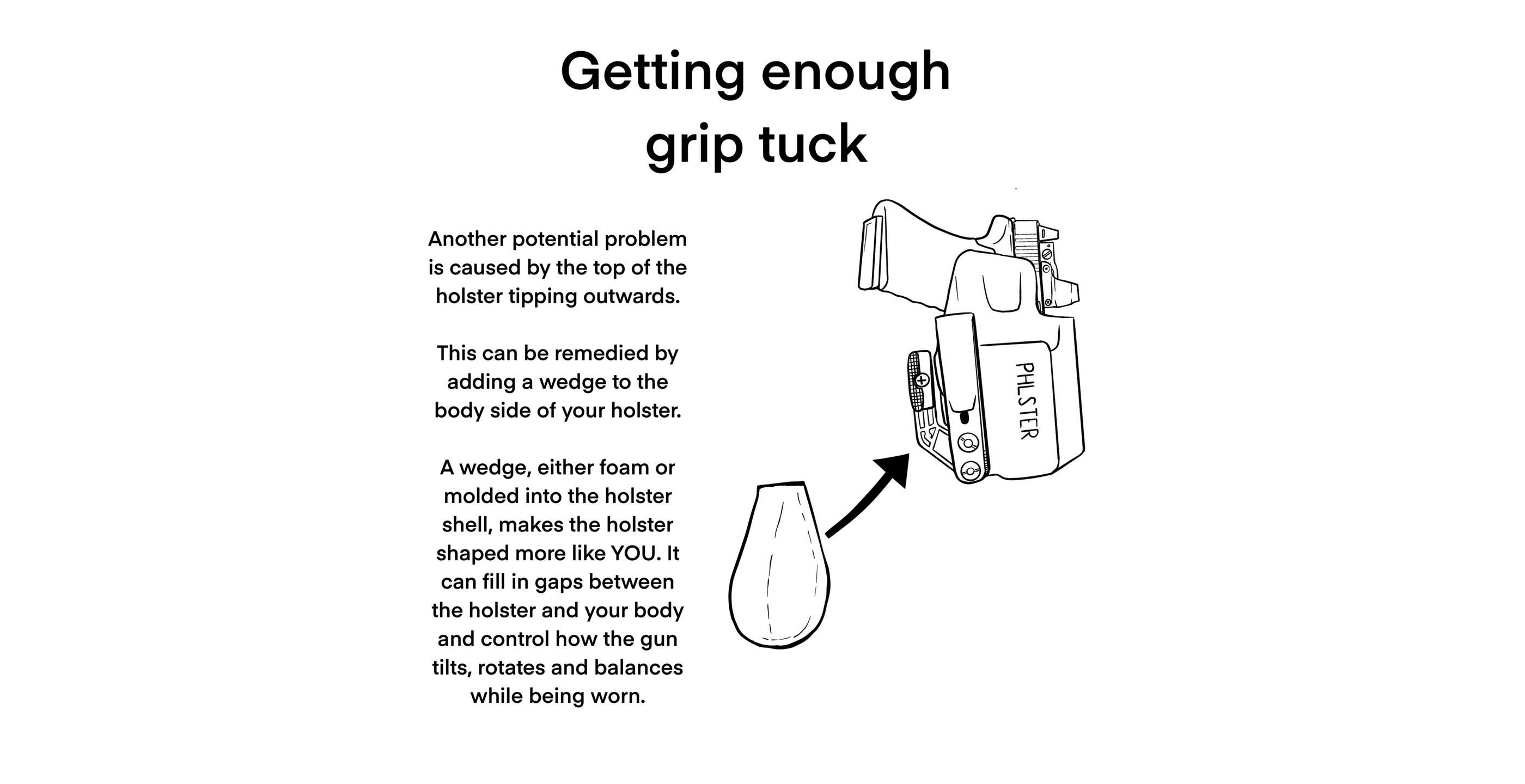
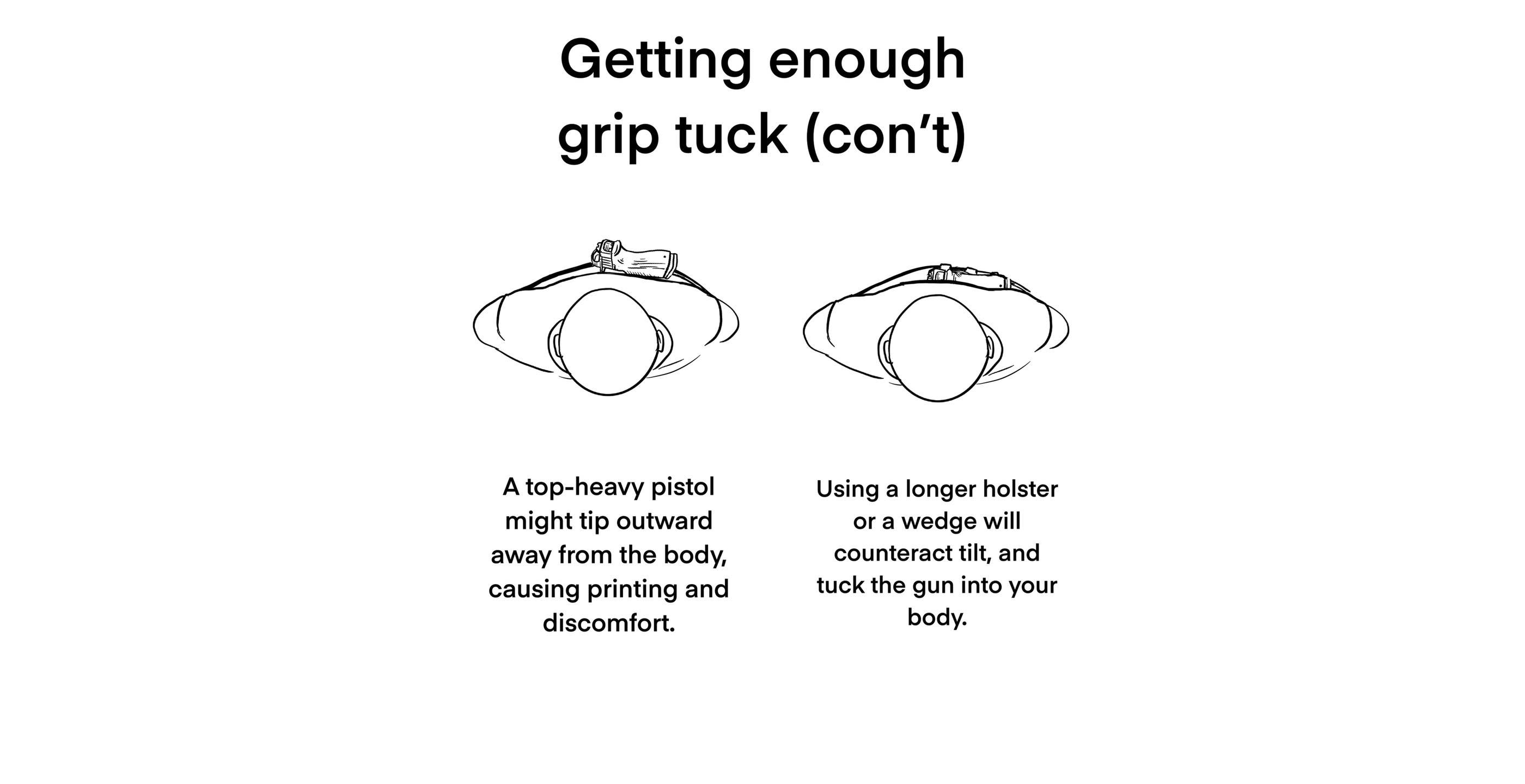
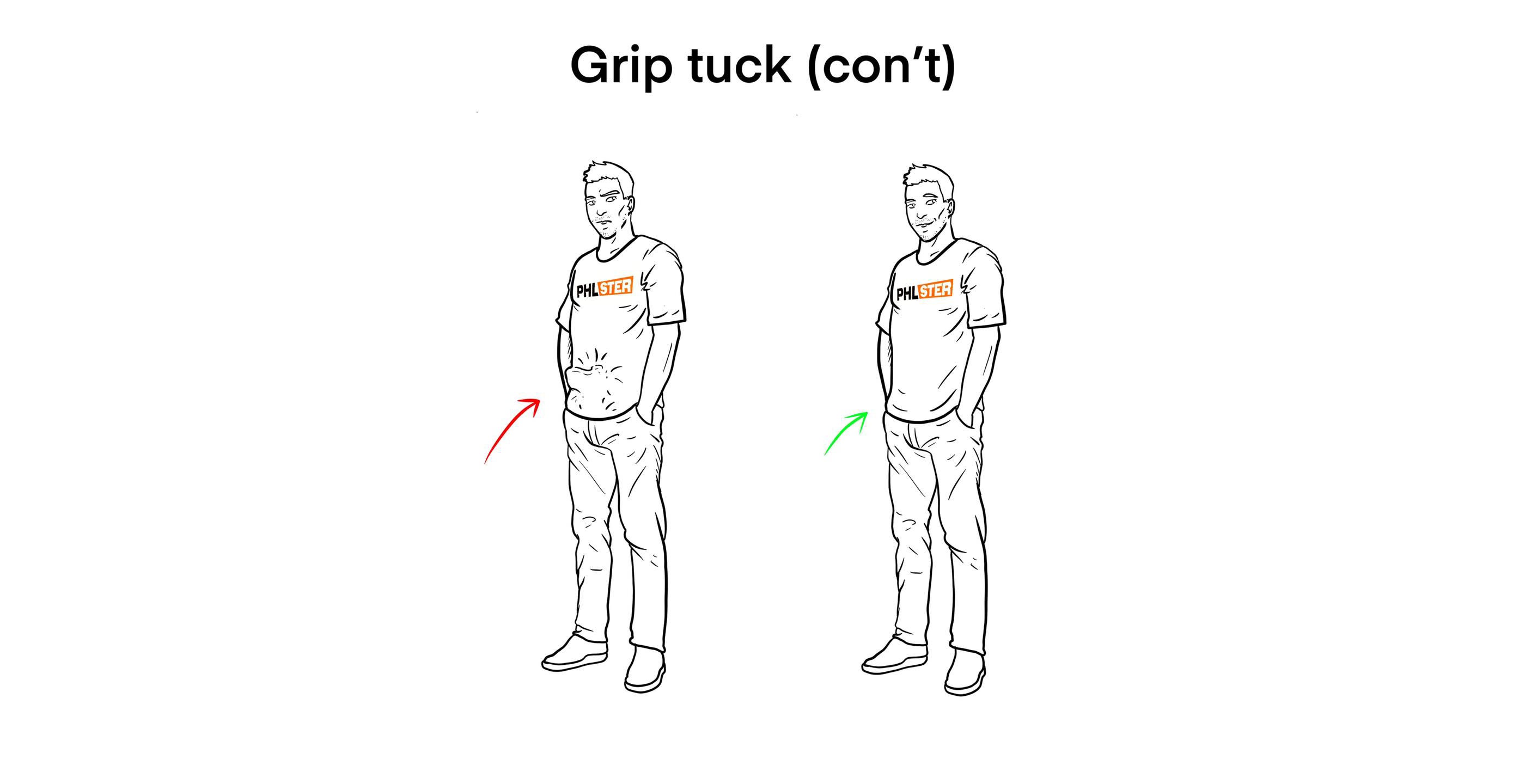
The art of getting enough grip tuck is a delicate balance of getting the holster to be as closely shaped to your body as possible. Instead of your holster slowly tipping outwards a small wedge can help it remain in place all day long.
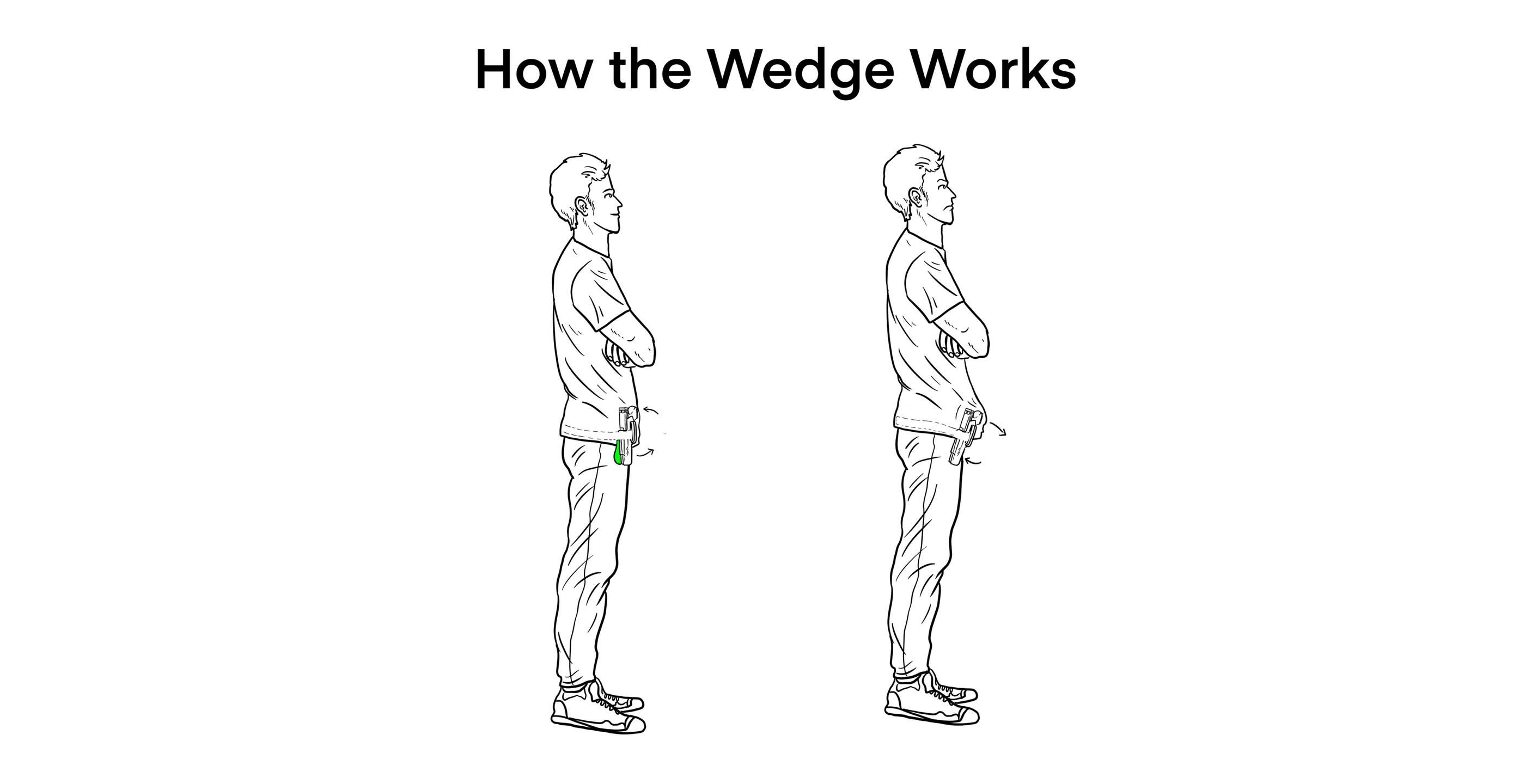
The above photo gives a better visual representation of just how valuable a good wedge can be when properly applied to the body of a holster. It repositions your holster from having a tippy feeling to being more upright and closer to your body.
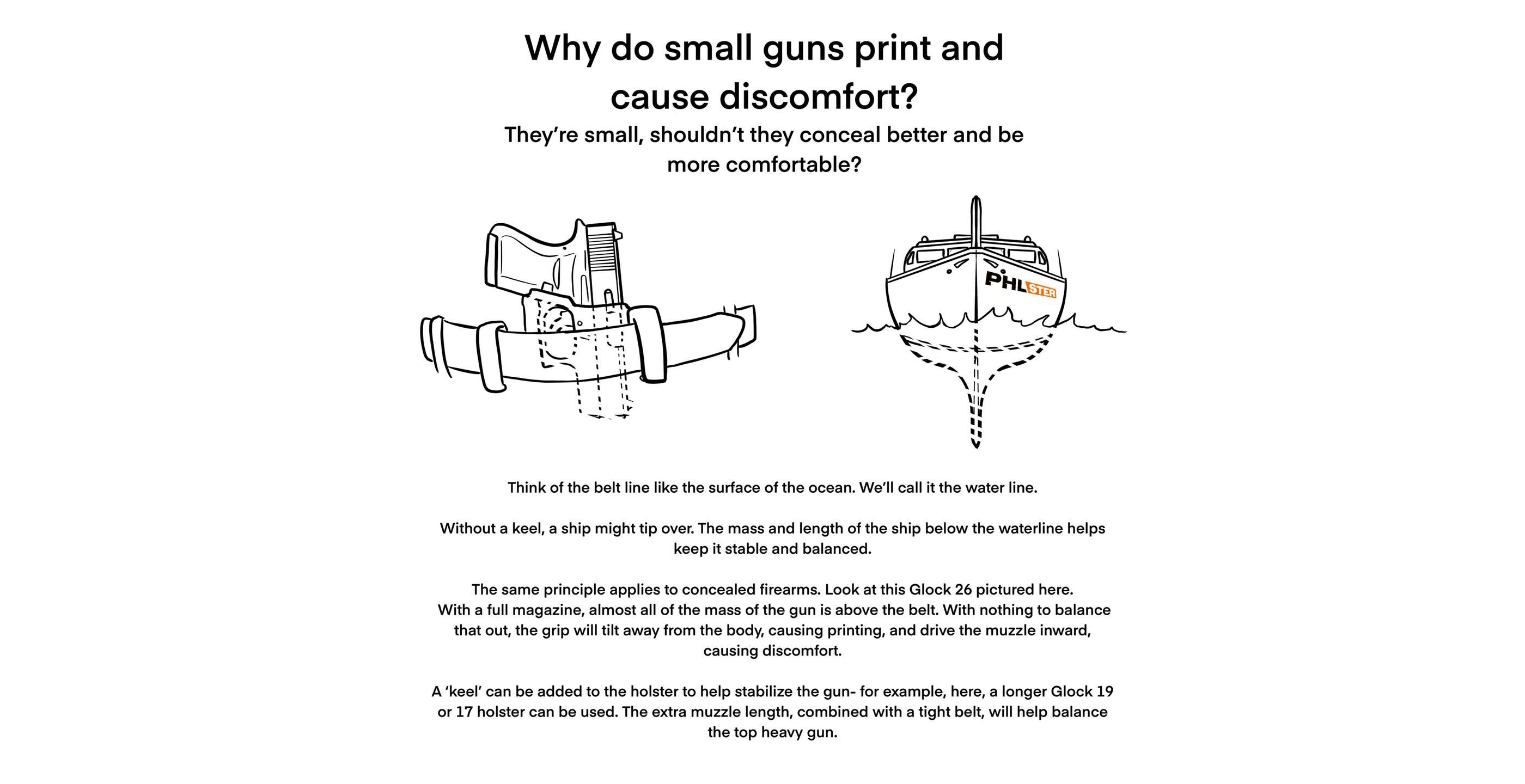
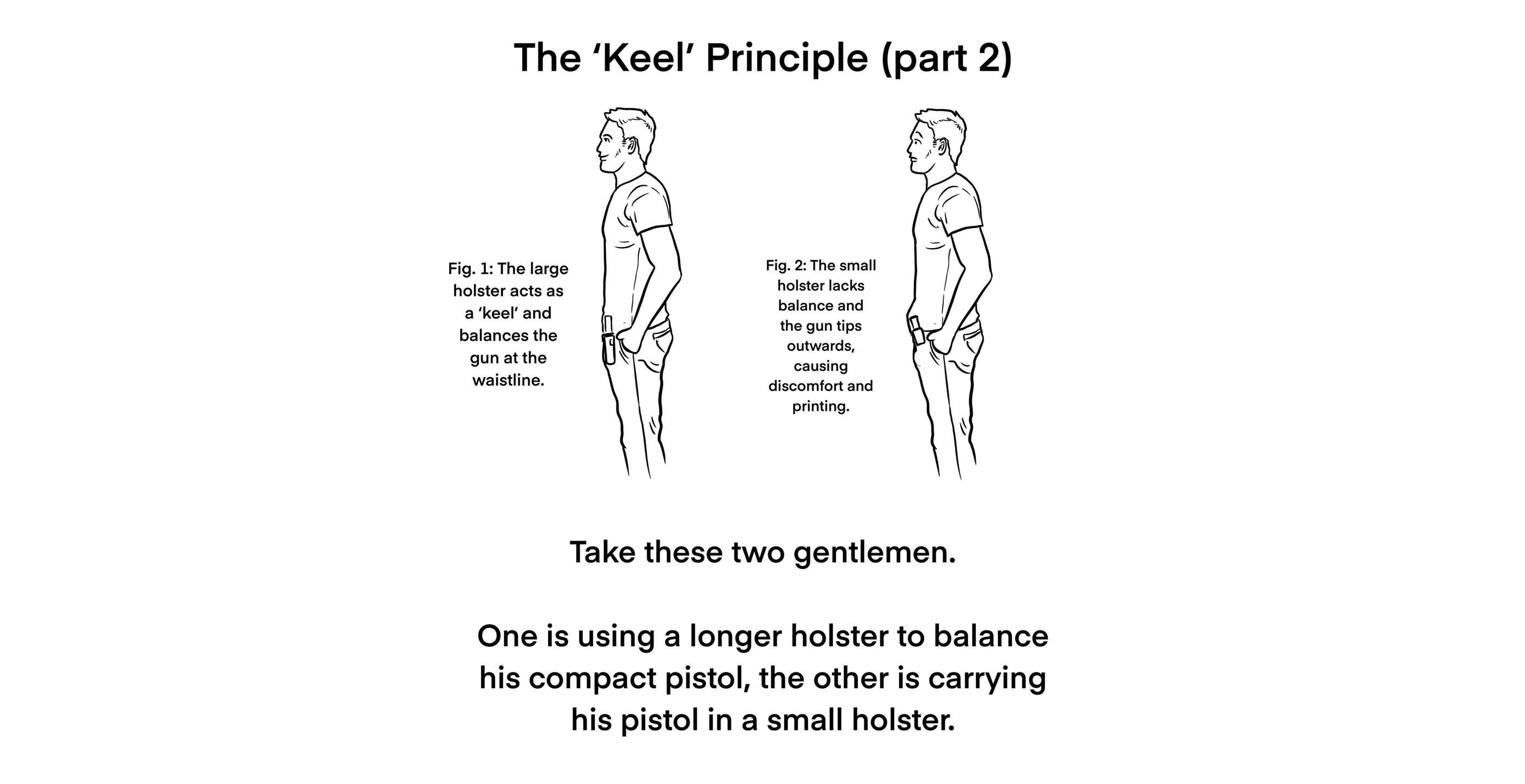
A small, mysterious enigma is why do smaller guns seem more difficult to carry and print? A lot of that can be attributed to what PHLster holsters is referring to as lack of depth in your waistline or not having a keel (like a large ship on the ocean).
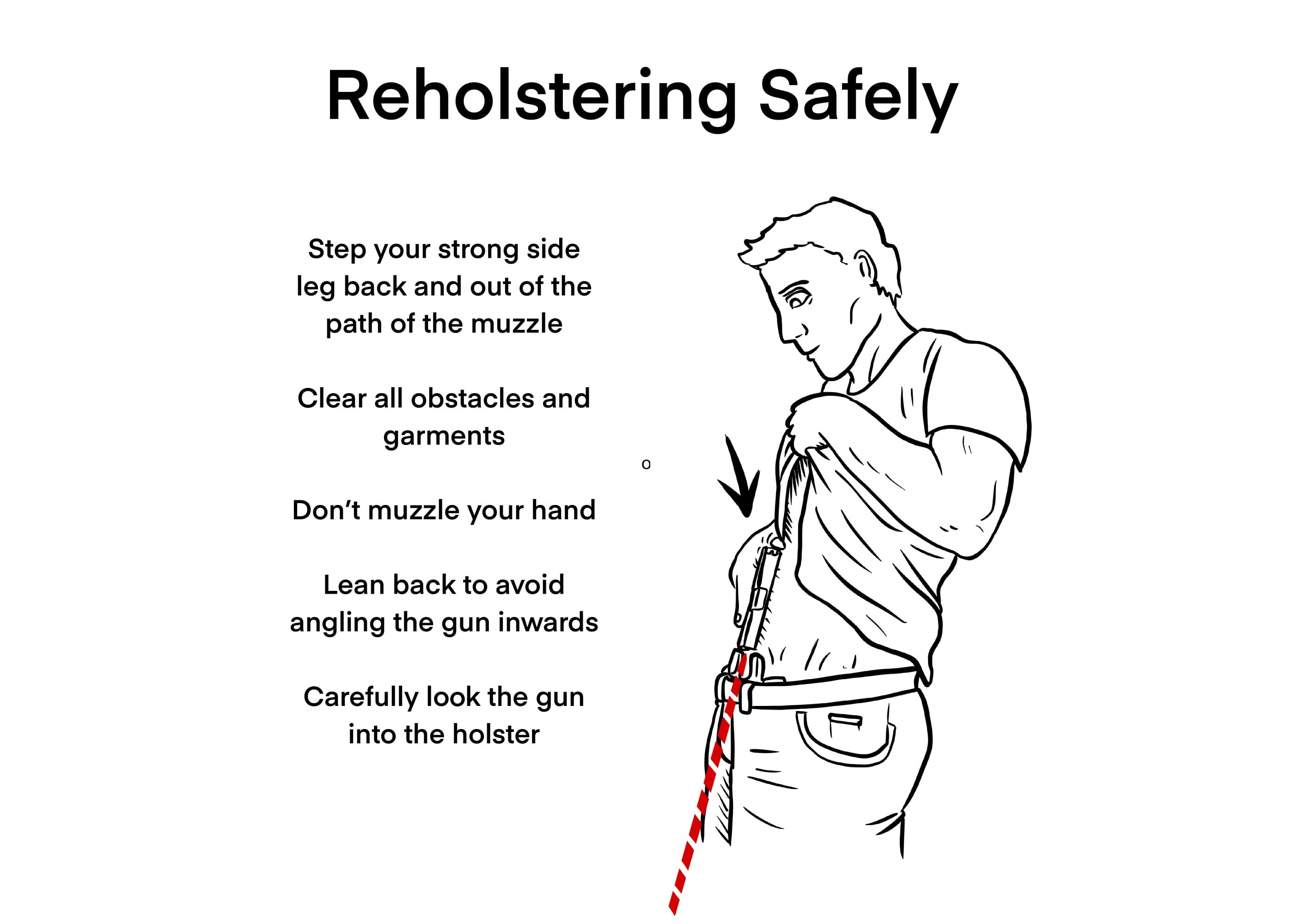
The final element to safe and proper concealed carry of a firearm is the ability to re-holster your weapon safely. Whether you are doing drills at the range to become more proficient with your carry firearm and its dedicated holster, or you had drawn your sidearm in self-defense, you need to then seat your weapon back in its holster safely. This topic gets a lot of chuckles from the peanut gallery that “you don’t want to shoot your wanker off” or other more colorful expressions, but the fact remains that you should always see your firearm into the holster and have it angled away from your body. This is safe for both men and women. If you just made the gut-wrenching and painfully-stressful decision to draw your weapon to defend yourself or your family, the last thing you want to have happen is an injury upon re-holstering your firearm.
So, there you have it! PHLster Holsters not only makes great quality holsters, but they dropped a lot of knowledge bombs in this 14 photo journey of the different considerations to take when selecting and deploying a holster. As always, let us know all of your thoughts in the Comments below! We always appreciate your feedback.